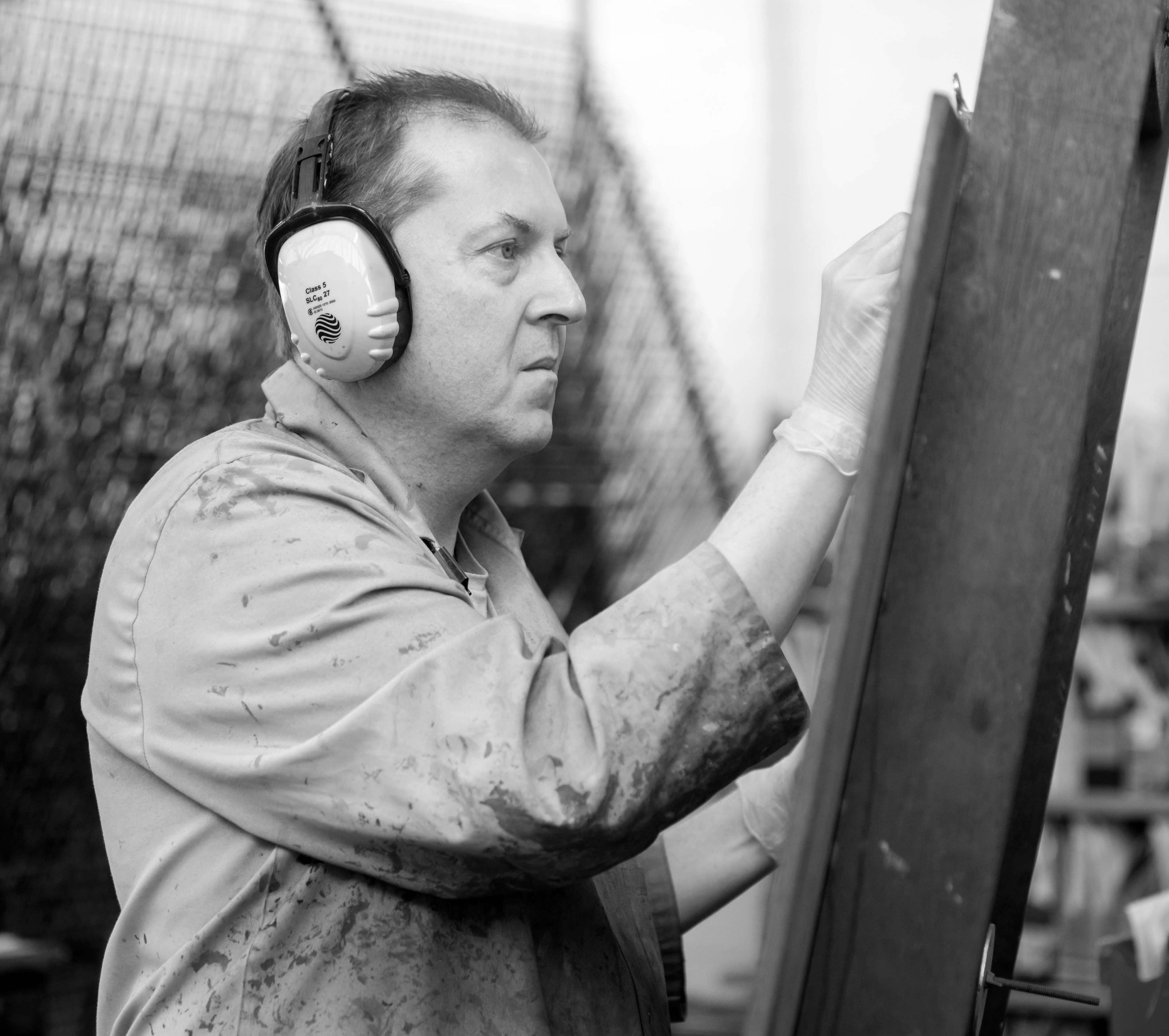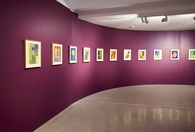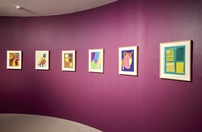Julian Martin
Naarm/Melbourne
2023
Displayed 2023 at Campbelltown Arts Centre

Julian Martin
Born 1969, Naarm/Melbourne.
Lives and works in Naarm/Melbourne.
Characterised by their rich surfaces and planes of vibrant colour, Julian Martin’s pastel works are created using a distinct form of visual reduction. Methodical in his approach, Martin carefully works from photographs and arranged still life, deconstructing these references to create highly considered compositions. His pastels evoke a strong bodily resonance, whereby pigment powder is heavily layered into the surface of the paper with an almost sculptural affect or affinity. Martin’s work is a continuous reinterpretation of, and response to, form: a harmony of texture and depth that both plays into and is unfazed by the parameters of abstraction.
Martin has worked at the Arts Project Australia studio since 1988. He has held solo exhibitions at Arts Project Australia and Australian Galleries, Sydney and Melbourne, among others. He has shown in group exhibitions nationally and internationally, and has work in significant collections including The Museum of Everything in London, City of Melbourne, Monash University Museum of Art, and the National Gallery of Victoria (gifted by Stuart Purves), as well as private collections worldwide. He is represented by Fleisher/Ollman, Philadelphia and Arts Project Australia, Melbourne.
Artist text
by Kelly Gellatly
Julian Martin’s creative output is integrally linked to Arts Project Australia (APA), a studio for neurodiverse artists in the inner-Melbourne suburb of Northcote, and the place he has been making art since the age of 20. Over the course of 30-plus years, Martin has established a methodical regimen that underpins his practice, ensuring he starts each new work with a sense of relative ease, in a space in which he both knows and sets the parameters. Yet from this highly controlled launching pad, an extraordinary range of imagery emerges, encompassing portraiture, still life, biomorphic abstraction, and work more akin to colour field painting.
These art world genres provide a mechanism through which we can begin to categorise, describe, and interpret Martin’s work, but they mean little to him as an artist. Inspiration may come instead from the box of reference images in the APA studio, from the surrounding environment (for example, coffee cups, water bottles, or the tools of the trade), or from the artist’s imagination. Across his now-long career, Martin has produced an extensive series of self-portraits, portraits of public figures ranging from footballers and politicians to Hollywood stars, studies of letters of the alphabet and groups of everyday objects such as kitchen utensils, tools, or keys, and images that read as ‘pure’ abstraction, where it is impossible to discern the artist’s ‘real-life’ source material. Yet regardless of subject matter, the beauty and joy of Martin’s work is always found in its rich, saturated colour, its extraordinary materiality, and in the place where his images hover between representation and abstraction.
Martin began working in pastel in the early 1990s, and from that time quickly established the signature style for which he is most well known and widely celebrated. (1) Martin’s images are never reworked but are vigorously made with an assured and confident hand, resulting in a sea of pastel dust on his easel and the surrounding area. He clearly loves the tactile nature of the material, and the attention he pays to surface and texture in the dense layers of his images reveals an intimate knowledge of pastel’s characteristics and possibilities. A tricky and temperamental medium to work with, pastel is highly responsive to touch and smudging – something that does not seem to bother Martin. Close inspection of his works often reveals finger marks and traces of the various tools he employs. He often delineates the ‘hard’ edges of his forms with a sharp tool (2) used to scrape back the pastel to differentiate it from the adjoining hue, and areas of colour are sometimes ‘embossed’ by a blending stump to give his forms a sense of both relief and depth. (3) Yet despite this technique, Martin’s images remain universally flat and make no attempt at realism. They are celebrations of colour and form.
To experience Martin’s work is to dive headlong into a rich expanse of pure, velvety colour and to allow the sensuous nature of the artist’s vast swathes of pastel to overwhelm the senses. These are works where we can leave the head behind and engage almost solely with the heart. Martin’s work reminds us of the joy of looking at and being with art – of what it can give and mean, in a place beyond words.
(1) Julian Martin also works in the ceramics studio at Arts Project Australia about onc a fortnight, creating smooth, spherical, flat pebbles which are glazed with matte colours. See for example, Untitled (2019) in Trent Walter/Negative Press, Circleworks, Arts Project Australia, Collingwood Yards, Melbourne, 19 March – 24 April 2022, pp.10–11, https://drive.google.com/viewerng/ viewer?url=https://static1.squarespace.com/ static/5ce3d1e94eeb4800018d761c/t/6237 e31876360e5deb4920cc/1647829790796/ Circleworks%2Bcatalogue.pdf.
(2) APA Studio Manager James McDonald has described this tool as ‘something that’s like a printmaking burnishing tool with a kind of ballpoint pen end, which may have been sharp once, but now isn’t.’ Conversation with the author, 6 December 2022. The author is grateful to APA Studio Manager James McDonald for sharing his insights into Julian Martin’s working method.
(3) Alex Baker, ‘Julian Martin’s Abstraction With A Lower-Case “a”’ in Julian Martin: Transformer, Arts Project Australia, Melbourne, 2014, p.15.
Auslan - Julian Martin
2min
About the work of Julian Martin in The National 4.
Artist's acknowledgements
Julian Martin is represented by Arts Project Australia, Melbourne, and Fleisher/Ollman Gallery, Philadelphia, USA.
The artist thanks his family, Arts Project Australia, Flesiher/Ollman Gallery, and Alex Baker, Director of Fleisher/Ollman Galley.

